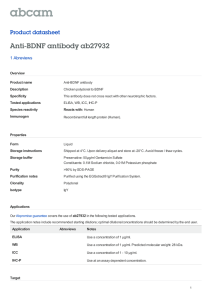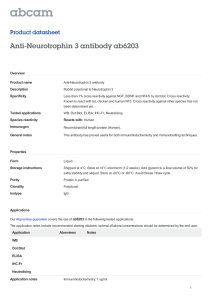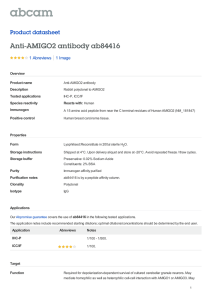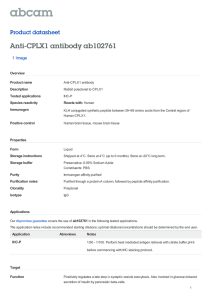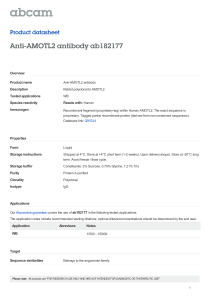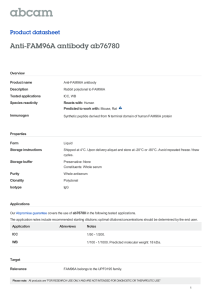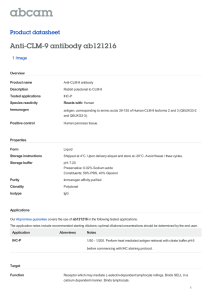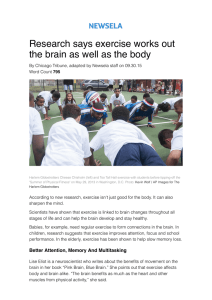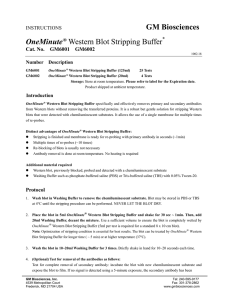Anti-BDNF antibody ab6200 Product datasheet Overview Product name
advertisement
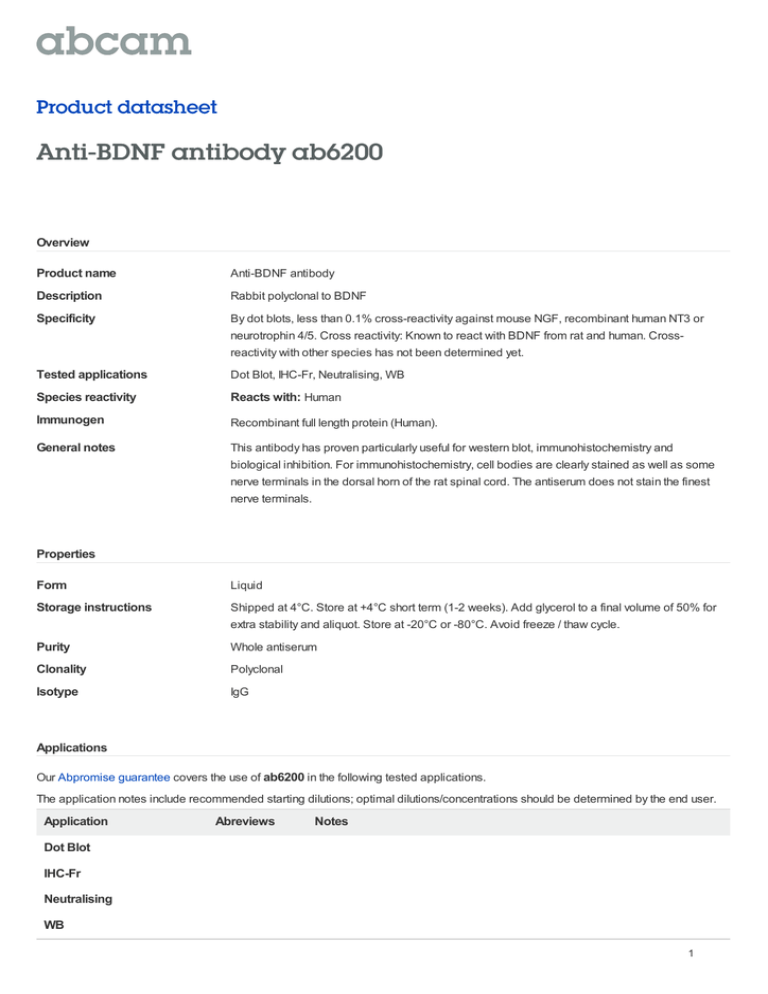
Product datasheet Anti-BDNF antibody ab6200 Overview Product name Anti-BDNF antibody Description Rabbit polyclonal to BDNF Specificity By dot blots, less than 0.1% cross-reactivity against mouse NGF, recombinant human NT3 or neurotrophin 4/5. Cross reactivity: Known to react with BDNF from rat and human. Crossreactivity with other species has not been determined yet. Tested applications Dot Blot, IHC-Fr, Neutralising, WB Species reactivity Reacts with: Human Immunogen Recombinant full length protein (Human). General notes This antibody has proven particularly useful for western blot, immunohistochemistry and biological inhibition. For immunohistochemistry, cell bodies are clearly stained as well as some nerve terminals in the dorsal horn of the rat spinal cord. The antiserum does not stain the finest nerve terminals. Properties Form Liquid Storage instructions Shipped at 4°C. Store at +4°C short term (1-2 weeks). Add glycerol to a final volume of 50% for extra stability and aliquot. Store at -20°C or -80°C. Avoid freeze / thaw cycle. Purity Whole antiserum Clonality Polyclonal Isotype IgG Applications Our Abpromise guarantee covers the use of ab6200 in the following tested applications. The application notes include recommended starting dilutions; optimal dilutions/concentrations should be determined by the end user. Application Abreviews Notes Dot Blot IHC-Fr Neutralising WB 1 Application notes Immunohistochemistry: 1/1,000 Western Blot: 1/1,000 Immunoblot: 1/1,000 1 site ELISA: 1/1,000 Biological Inhibition: 5- 10 ul/ gm body weight in vivo. Target Function During development, promotes the survival and differentiation of selected neuronal populations of the peripheral and central nervous systems. Participates in axonal growth, pathfinding and in the modulation of dendritic growth and morphology. Major regulator of synaptic transmission and plasticity at adult synapses in many regions of the CNS. The versatility of BDNF is emphasized by its contribution to a range of adaptive neuronal responses including long-term potentiation (LTP), long-term depression (LTD), certain forms of short-term synaptic plasticity, as well as homeostatic regulation of intrinsic neuronal excitability. Tissue specificity Brain. Highly expressed in hippocampus, amygdala, cerebral cortex and cerebellum. Also expressed in heart, lung, skeletal muscle, testis, prostate and placenta. Involvement in disease Bulimia nervosa 2 Congenital central hypoventilation syndrome Sequence similarities Belongs to the NGF-beta family. Post-translational modifications The propeptide is N-glycosylated and glycosulfated. Converted into mature BDNF by plasmin (PLG). Cellular localization Secreted. Please note: All products are "FOR RESEARCH USE ONLY AND ARE NOT INTENDED FOR DIAGNOSTIC OR THERAPEUTIC USE" Our Abpromise to you: Quality guaranteed and expert technical support Replacement or refund for products not performing as stated on the datasheet Valid for 12 months from date of delivery Response to your inquiry within 24 hours We provide support in Chinese, English, French, German, Japanese and Spanish Extensive multi-media technical resources to help you We investigate all quality concerns to ensure our products perform to the highest standards If the product does not perform as described on this datasheet, we will offer a refund or replacement. For full details of the Abpromise, please visit http://www.abcam.com/abpromise or contact our technical team. Terms and conditions Guarantee only valid for products bought direct from Abcam or one of our authorized distributors 2
